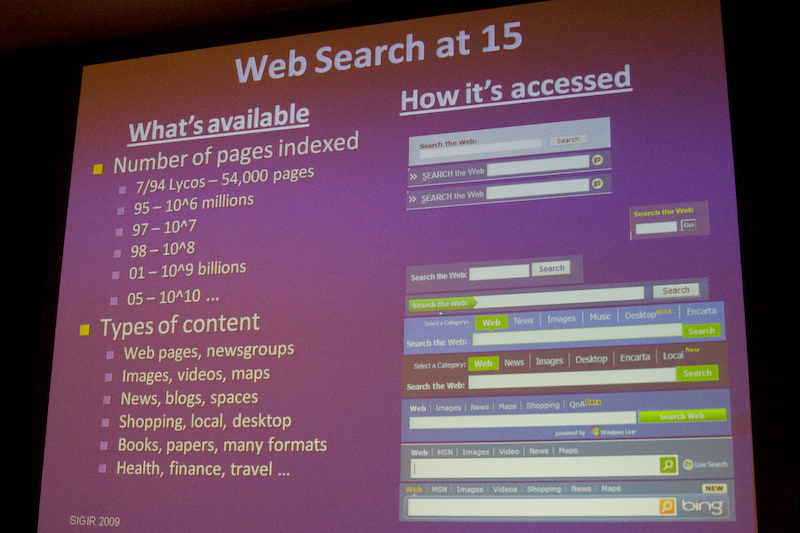A number of people have already written about the Sue Dumais “Salton Award” talk at SIGIR. I encourage you to read their posts, and in particular pay attention to the emphasis that she put on her work at the intersection of HCI and IR. I see this area as only continuing to grow over the next decade.
So along those lines I want to share a small tidbit from her talk that I particularly identified with. As I’ve written about in the past, one of my pet irritants is the search input box. Web search has been around for 1.5 decades, but there is still only a single line for expressing and inputing the richness of one’s information needs. Dumais shares this frustration, and in her talk showed this slide:

This is web search at 15. Lycos started with 54k pages in July of 1994, and today we are up to billions. Web search engines started indexing only web pages and Usenet newsgroups. Now there are maps, videos, shopping, stocks, health, travel, and so on. But has there been parity in the manner in which users are able to express their richer and more complex information needs? No, that remains unchanged. The shot above shows the past n years of MSN/Live/Bing search interfaces (the next slide also did the same thing for Google — but I missed that shot), obtained through the Internet Archive. Nothing significant has changed. Sure, things get a little wider, things get more colors and a few more verticals. But it’s still a one (not even two!) line input box.
Dumais felt, and I completely agree, that continuing down this path is not the best way to approach Information Retrieval. Sure, for certain types of queries we will still only need this flat simplicity. But with the richness of information available (video! music!), continuing to optimize for single line text does a disservice to the users.
